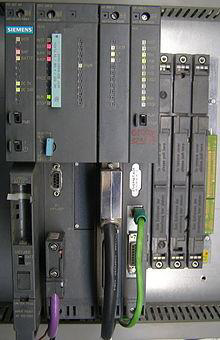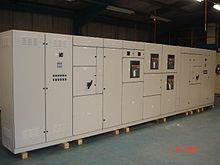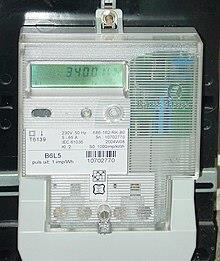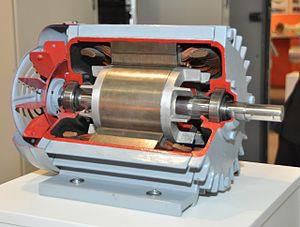Electrical instruments and equipment
Electrical instruments and equipment includes any machine powered by electricity. It usually consists of an enclosure, a variety of electrical components, and often a power switch. Examples of these include:
- Microcontroller
- Programmable logic controller
More specifically, often electrical equipment refers only to components part of the electrical distribution system such as:
- Electric switchboards
- Distribution boards
- Circuit breakers and disconnects
- Electricity meter
- Transformers
- Electric Motors
MICROCONTROLLER
A microcontroller (or MCU for microcontroller unit) is a small computer on a single integrated circuit. In modern terminology, it is similar to, but less sophisticated than, a system on a chip or SoC; a SoC may include a microcontroller as one of its components. A microcontroller contains one or more CPUs (processor cores) along with memory and programmable input/output peripherals. Program memory in the form of ferroelectric RAM, NOR flash or OTP ROM is also often included on chip, as well as a small amount of RAM. Microcontrollers are designed for embedded applications, in contrast to the microprocessors used in personal computers or other general purpose applications consisting of various discrete chips.
PROGRAMMABLE LOGIC CONTROLLER
A programmable logic controller (PLC), or programmable controller is an industrial digital computer which has been ruggedized and adapted for the control of manufacturing processes, such as assembly lines, or robotic devices, or any activity that requires high reliability control and ease of programming and process fault diagnosis. They were first developed in the automobile industry to provide flexible, ruggedized and easily programmable controllers to replace hard-wired relays, timers and sequencers. Since then they have been widely adopted as high-reliability automation controllers suitable for harsh environments. A PLC is an example of a "hard" real-time system since output results must be produced in response to input conditions within a limited time, otherwise unintended operation will result.

ELECTRIC SWITCHBOARDS
An electric switchboard is a device that directs electricity from one or more sources of supply to several
smaller regions of usage. It is an assembly of one or more panels, each of which contains switches that
allow electricity to be redirected.
The U.S. National Electrical Code (NEC) defines a switchboard as "a large single panel, frame, or assembly of panels on which are mounted, on the face, back, or both, switches, over-current and other protective devices, buses, and usually instruments". The role of a switchboard is to allow the division of the current supplied to the switchboard into smaller currents for further distribution and to provide switching, current protection and (possibly) metering for those various currents. In general, switchboards may distribute power to transformers, panel boards, control equipment, and, ultimately, to individual system loads. Inside a switchboard there will be one or more bus bars. These are flat strips of copper or aluminum, to which the switchgear is connected. Bus bars carry large currents through the switchboard, and are supported by insulators. Bare bus bars are common, but many types are now manufactured with an insulating cover on the bars, leaving only connection points exposed. The operator is protected from electrocution by safety switches and fuses. There may also be controls for the supply of electricity to the switchboard, coming from a generator or bank of electrical generators, especially frequency control of AC power and load sharing controls, plus gauges showing frequency and perhaps a synchro scope. The amount of power going into a switchboard must always equal to the power going out to the loads.

DISTRIBUTION BOARDS
A distribution board (also known as panel board, breaker panel, or electric panel) is a component of an electricity supply system that divides an electrical power feed into subsidiary circuits, while providing a protective fuse or circuit breaker for each circuit in a common enclosure. Normally, a main switch, and in recent boards, one or more residual current devices (RCD) or residual current breakers with overcurrent protection (RCBO), are also incorporated. In the United Kingdom, a distribution board designed for domestic installations is known as a consumer unit.
CIRCUIT BREAKERS
A circuit breaker is an automatically operated electrical switch designed to protect an electrical circuit from damage caused by excess current from an overload or short circuit. Its basic function is to interrupt current flow after a fault is detected. Unlike a fuse, which operates once and then must be replaced, a circuit breaker can be reset (either manually or automatically) to resume normal operation. Circuit breakers are made in varying sizes, from small devices that protect low-current circuits or individual household appliance, up to large switchgear designed to protect high voltage circuits feeding an entire city. The generic function of a circuit breaker, RCD or a fuse, as an automatic means of removing power from a faulty system is often abbreviated as OCPD (Over Current Protection Device).
ELECTRICITY METER
An electricity meter, electric meter, electrical meter, or energy meter is a device that measures the amount of electric energy consumed by a residence, a business, or an electrically powered device. Electric utilities use electric meters installed at customers' premises for billing purposes. They are typically calibrated in billing
units, the most common one being the kilowatt hour (kWh). They are usually read once each billing period. When energy savings during certain periods are desired, some meters may measure demand, the maximum use of power in some interval. "Time of day" metering allows electric rates to be changed during a day, to record usage during peak high-cost periods and offpeak, lower-cost, periods. Also, in some areas meters have relays for demand response load shedding during peak load periods.

TRANSFORMERS
A transformer is a static electrical device that transfers electrical energy between two or more circuits through electromagnetic induction. A varying current in one coil of the transformer produces a varying magnetic field, which in turn induces a varying electromotive force (emf) or "voltage" in a second coil. Power can be transferred between the two coils, without a metallic connection between the two circuits. Faraday's law of induction discovered in 1831 described this effect. Transformers are used to increase or decrease the alternating voltages in electric power applications. Since the invention of the first constant-potential transformer in 1885, transformers have become essential for the transmission, distribution, and utilization of alternating current electrical energy.[3] A wide range of transformer designs is encountered in electronic and electric power applications. Transformers range in size from RF transformers less than a cubic centimeter in volume to units interconnecting the power grid weighing hundreds of tons.
ELECTRIC MOTORS
An electric motor is an electrical machine that converts electrical energy into mechanical energy. The reverse of this is the conversion of mechanical energy into electrical energy and is done by an electric generator, which has much in common with a motor. Most electric motors operate through the interaction between an electric motor's magnetic field and winding currents to generate force. In certain applications, such as in regenerative braking with traction motors in the transportation industry,
electric motors can also be used in reverse as generators to convert mechanical energy into electric power. Found in applications as diverse as industrial fans, blowers and pumps, machine tools, household appliances, power tools, and disk drives, electric motors can be powered by direct current (DC) sources, such as from batteries, motor vehicles or rectifiers, or by alternating current (AC) sources, such as from the power grid, inverters or generators. Small motors may be found in electric watches. General-purpose motors with highly standardized dimensions and characteristics provide convenient mechanical power for industrial use. The largest of electric motors are used for ship propulsion, pipeline compression and pumped-storage applications with ratings reaching 100 megawatts. Electric motors may be classified by electric power source type, internal construction, application, type of motion output, and so on. Electric motors are used to produce linear or rotary force (torque), and should be distinguished from devices such as magnetic solenoids and loudspeakers that convert electricity into motion but do not generate usable mechanical powers, which are respectively referred to as actuators and transducers.


